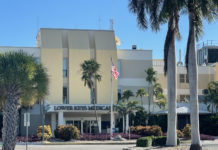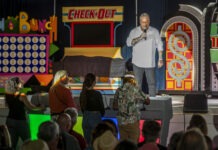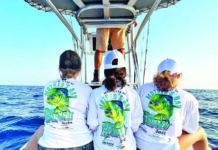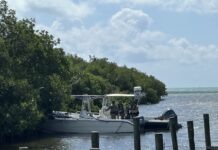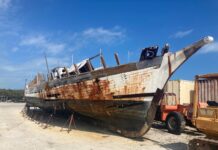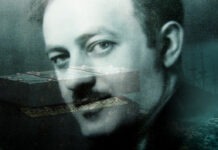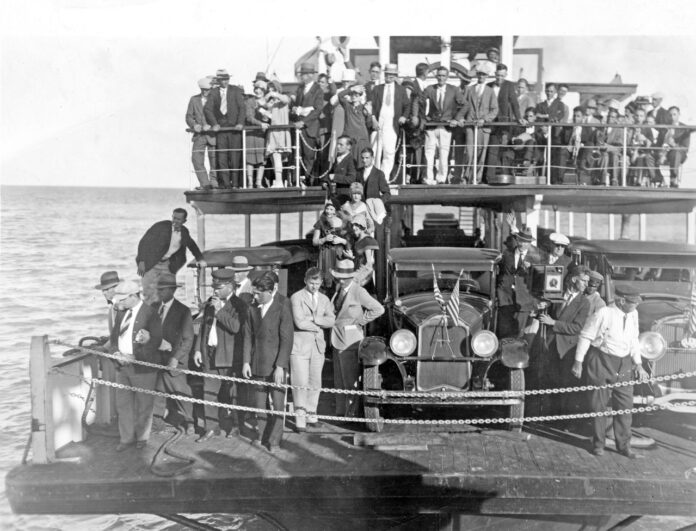
Editor’s Note: This is the third in a four-part series on Monroe County’s 200th year.
Transportation improvements played a vital role in the development of Monroe County in general and the Florida Keys in particular. One of the first improvements was to the shipping lanes as lighthouses were erected to mark the Florida Reef.
Next, the ships navigating the dangerous passage stopped relying solely on the mercy of the elements and switched to the more reliable catalyst of steam. Charts, too, improved and better marked the coral reefs, shoals and passes that can prove tricky to navigate with the modern use of GPS.
When connecting with the outside world, pioneer families up and down the archipelago relied on ships to deliver goods and services like food staples, ice, mail, coffee, family and friends. Because natural deep harbors are few and far between along the island chain, communities relied on long piers that stretched out into the deeper, more navigable waters to dock their vessels. And then, Henry Flagler and his Florida East Coast Railway announced plans to deliver the railroad to Key West and changed everything.
When it was done, the railroad did more than stitch together a right-of-way linking Key West to the mainland; it altered the culture of the Keys. No longer were isolated island communities reliant on the whims of weather and tide to connect to the outside world. Flagler’s Over-Sea Railroad brought convenience and a regimented delivery system for food staples, mail and visitors. It also drew island residents away from the islands’ edges and closer to the train depots.
While Flagler rode his train down the island chain to Key West on Jan. 22, 1912, daily service arrived before that in the Middle and Upper Keys. By 1908, daily train service was established between Miami and Knights Key. At the tip of Marathon and right before the Seven Mile Bridge, Knights Key served as the temporary terminus of the line before Flagler’s grand entrance in 1912.
Several railroad “towns” sprang up along the way, including, in the Upper and Middle Keys, Islamorada and Marathon. There are many stories told about the origin of the name Marathon. According to the late historian Dan Gallagher, author of “Florida’s Great Ocean Railway, Building the Key West Extension” (Pineapple Press, 2003), the F.E.C. Railway’s president, Joseph R. Parrott, credited the American poet Witter Bynner for the choice. Parrott invited Bynner down to the Keys to “plot stations for the railroad.”
Circa 1908, Bynner, inspired by a poem written by the Romantic poet Lord Byron, who penned in his work “The Isles of Greece,” “The mountains look on Marathon — And Marathon looks on the sea. …” chose the name Marathon.
The name Islamorada has a storied history, too. Local lore suggests Islamorada was discovered by Spanish explorers who named Upper Matecumbe Key (and presumably the surrounding islands) the Purple Isles. It is a legendary story. Islamorada was actually developed by one of Flagler’s engineers, William J. Krome. Krome purchased 15 acres of Upper Matecumbe Key for $739, platted 22 lots, and chose the name Islamorada for his town site.
According to Isabelle Krome, his wife, “I was not a member of the family at that time and had no part in the selecting of the name, but Mr. Krome told me that it was derived from the Spanish ‘isla’ and ‘morada,’ meaning home.”
The train was not the only conduit built to connect Key West to the mainland. State Road 4A, the first version of the Overseas Highway, was also on the horizon. When it opened to public transit in 1928, it was an incomplete path requiring a 40-mile trip aboard an automobile ferry to complete. The problematic road stopped at the end of Lower Matecumbe Key and picked back up again 40 miles away at No Name Key.
While the initial road brought traffic to the Upper Keys, the trip to the Lower Keys proved inconvenient. Improvements were made, and by 1932, the ferry connected to the Middle Keys. In 1934, plans were made to eliminate the ferry by building a series of solid automobile bridges that would parallel the railroad in the hopes of attracting more traffic to Key West. Hundreds of World War I veterans were brought to the Upper Keys, housed in work camps, to begin bridge construction.
While hurricanes have affected the land incorporated within Monroe County for more than 200 years, the most powerful – and deadliest – to strike the island chain arrived on Sept. 2, 1935. It is remembered as the Labor Day Hurricane, a Category 5 storm that resulted in the loss of as many as 500 lives that included residents, visitors and World War I veterans.
Sept. 2, 1935, was also the last day that a train ran along the Key West Extension of Henry Flagler’s Florida East Coast Railway as the killer hurricane tore up and twisted 40 miles of railroad tracks. The new, improved highway, the Overseas Highway 2.0, opened as a complete road system linking Key West to the mainland in 1938. The passage crossed many of the same bridges built for Flagler’s train that had been refitted to accommodate automobile traffic. When the new road opened, it was a toll road, with booths at Lower Matecumbe and Big Pine keys.
With improved access to the island chain, a new industry began to develop along the island chain: tourism.


